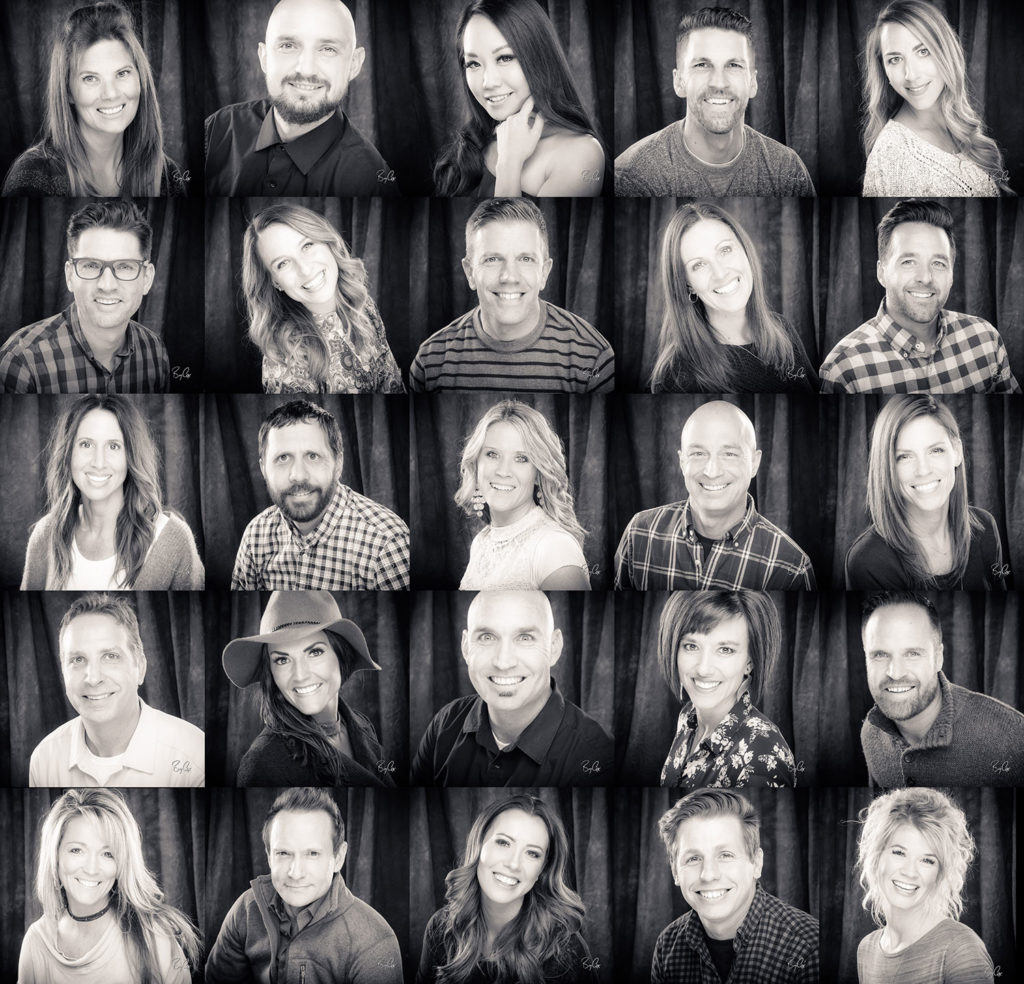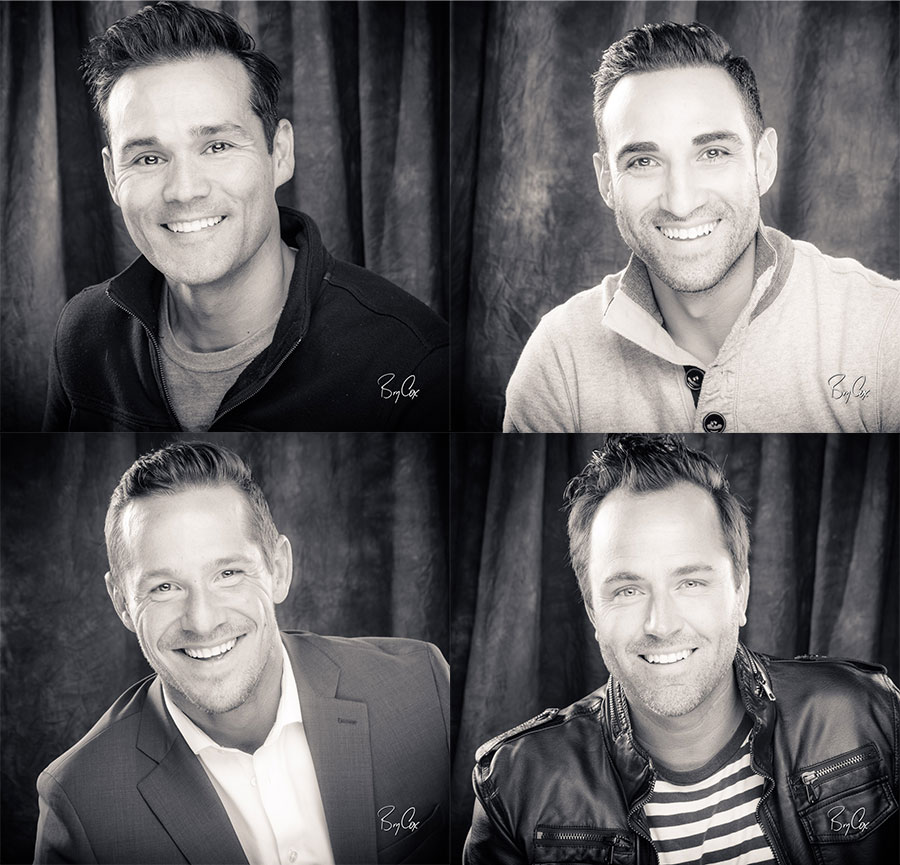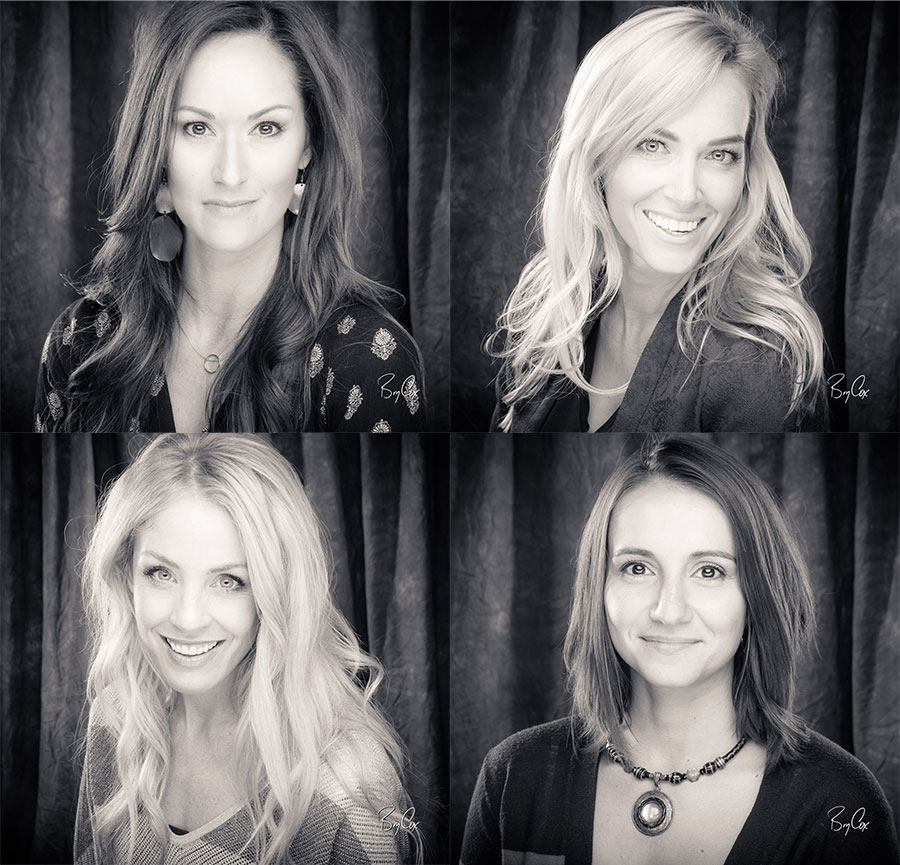
How do all of the things I teach photographers work in a real life photo shoot? And how do all the systems and pieces fit together? This shoot is a great example.
Some friends of mine organized a charity fundraiser for another friend who had some health problems. For that event, I set up some studio lights and a background and did quick 15-second portraits to raise extra money. Here are those images.
They encompass everything that I teach at workshops – nailing lighting and exposure so you don’t need to edit or retouch images, shooting very few images but getting quality when you shoot, getting great expressions that are real and engaging, and having a fast workflow.
For these images each person got about 15 seconds each, and I only shot 2-3 shots per person. From there, I said, “Great. You’re done. We got it.” I’d go over to the laptop and watch the images pop up, and I’d pick my initial favorite right there and let the person see it. The event and images were a hit. And no one came prepared for portraits that night, nor did anyone feel comfortable with everyone else watching them. Yet everyone loved their images, especially because they were real, organic, and weren’t retouched.
Now for a paying client I would retouch their final images. But as a photographer, you should shoot so well that you don’t have to. You should be able to sell immediately after the shoot because your images look so good.
For my workflow, some may think I used some plugin or software that “fixed” people’s eyes or skin. Nope. I lit people for great eyes and skin. No one has blurry skin or whitened eyes from some plugin. No one looks like plastic. They are real, have texture in their faces, and that’s what people loved. They know the images were real. They saw me create them and they immediately saw the result.
In fact there were photographers in attendance that shot iPhone pictures of my setup and gear believing I suppose that they needed the same gear. It wasn’t the gear. It was my use of the gear. It was about angles, and seeing the details quickly. It was about connecting with people to get great expression quickly, even though crowds of people were watching.
I normally shoot in what I call, “idea sets” of three images where I shoot up to three images, focusing on refining the shot. After those three images, I change the pose and shoot three more as a new “idea set.” So at this shoot, I simply gave every person one set (three quick shots) as I refined their expression.
I then flagged my favorite on my laptop and applied the same Lightroom preset across the shoot to all images. The Lightroom preset is my own, which converted the image to black & white and added some slight split-toning. I also synced across all images the same crop, and on export I used another preset to add my signature to the corner. That’s it.
This shoot covers so many of the things I teach photographers, all working together as individual pieces. In a normal shoot I’d spend more time with someone, shooting more options, and it’d be private without all the attention from a crowd. And in a normal shoot, I’d retouch the final images too. But the key here is that your images should look better before Photoshop, then everyone else’s images look after.
If you’re looking for some great photographic training, I’ll be speaking at Texas School for a solid week, plus I have hours and hours of training right here on my site.



Here are some of the images even bigger, so you can see them better.




And here is the only image I retouched. She’s a professional model and needed it finished so she could use it in her portfolio. But the retouching I did was very slight and almost unnoticeable.

Come train with me, either online here or at an event soon like Texas School.
And until next time, America.